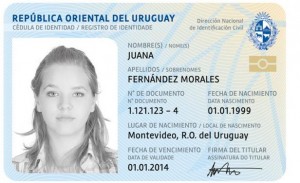As we discussed on a recent blog post, sometimes the devil’s in the detail, and exports are no exception to this rule. Even if you get the big picture right, how about saving yourself one or two headaches when exporting to Latin America? Let’s see if the following six tips can help:
1- Do not expect your emails to be answered.
This is probably frustration reason no.1 for US and European business people. You will find that some people are better than others at emails, but as a general norm, expect having to pick up the phone and make the calls.
2- Do not expect people to know their postcode.
Still underutilised across Latin America, despite governments’ attempts at making them more universal, postcodes are just some form of annoyance for most of us, something we only get asked about by our international (usually US or European) counterparts. Also, postcodes are nowhere near as precise as those in the UK, and usually apply to whole neighbourhoods or even towns.

Colombian Government Postcode Portal
3- You will be asked for ID.
Not only on arrival, but also when attending meetings at certain premises. You must carry your driving licence with you when driving and some form of ID will be asked for in most countries in order to pay by credit card. Photocopies are usually not accepted. Expect Latin Americans to find it hard to believe that Brits don’t have ID cards. And expect your ID number to be asked for all sorts of simple form-filling moments, of which there are plenty.
Some places with high security are a bit more extreme and will ask for your passport and entry evidence into the country. This happened to me twice last year, once at an energy company and another time when visiting a mine. They checked that my passport entry was stamped as a business trip and not a tourist. Interesting.
4- Remember 1st May is a bank holiday across the whole continent.
That’s one bank holiday most Brits are totally oblivious to. The rest tend to be pretty standard (New Years, Christmas, Easter) – remember to add Carnival, too. There will be country-specific holidays, too. Some holidays are compulsory for businesses and some are not, check with your contacts across Latin America which bank holidays they observe. Some countries are well-known for having plenty of bank holidays, others for having very few (the UK having the second lowest number of bank holidays in the world, sorry!):
“Latin America is home to the highest and lowest public holiday provision of any of the countries surveyed. Colombia has the most generous number of public holidays (18) whilst Mexico has the lowest (7). Argentina and Chile have 15 public holidays with Brazil offering 12.”
Mercer
5- The school year.
This has an impact not just on those working in the education/leisure sectors but on everyone. Think how at your own company things change during summer school holidays and half term holidays. Think what happens in Spain or France, for example, in August. You will quickly gather, for example, whether the school year runs from August until July (like in Mexico, in the Northern hemisphere) or from March until December (like in Chile or Uruguay, in the Southern hemisphere). For those in the Southern hemisphere, expect around two weeks of Winter holidays in July, too.

6- Expect travelling within Latin America to be expensive.
It’s a huge continent and low-cost airlines aren’t big yet. To give you an idea, expect to pay around £450 for a return flight between Montevideo and Santiago de Chile (2.5 hours) and easily around £800 for a return flight between Buenos Aires and Mexico City (around 13 hours). And expect stopovers.
On the positive side, I have been very impressed with regional airlines like LAN/TAM and Avianca, for example. A nice chance from Ryanair, I say.

